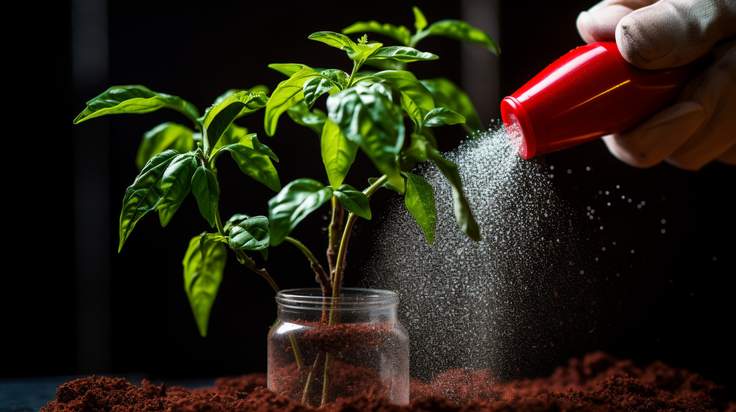A Guide to Fertilizing And Nutrition For Chili Plants

Chili plants, known for their fiery fruits and vibrant colors, can thrive and produce bountiful yields with the right care and nutrition. Fertilization plays a pivotal role in nurturing these plants to their full potential. In this article, we’ll delve into the nutritional needs of pepper plants and how to effectively fertilize and grow them for a robust harvest.
Understanding Pepper Plant Nutritional Requirements
Before diving into fertilization techniques, let’s explore the key nutrients that chili plants require for healthy growth and prolific fruiting:
Nitrogen (N): Essential for leafy growth and overall plant vigor.
Phosphorus (P): Promotes strong root development, flowering, and fruit formation.
Potassium (K): Aids in disease resistance, stress tolerance, and fruit quality.
Calcium (Ca): Supports cell wall structure and prevents disorders like blossom end rot.
Magnesium (Mg): Involved in photosynthesis and chlorophyll production.
Sulfur (S): Vital for amino acid formation and enzyme activity.
Choosing the Right Fertilizer
When it comes to fertilizing chili plants, selecting the appropriate fertilizer is crucial. Consider using a balanced, slow-release granular fertilizer with equal parts of nitrogen, phosphorus, and potassium (e.g., 10-10-10 or 14-14-14). Additionally, supplement your fertilizer with micronutrients like calcium, magnesium, and sulfur to ensure comprehensive nutrition.
Fertilization Guidelines
Pre-Planting Preparation: Begin by amending the soil with organic matter like compost to enhance nutrient retention and soil structure. This sets the stage for healthy root development.
Initial Feeding: When transplanting or seeding chili plants, apply a balanced fertilizer at half the recommended rate to avoid overwhelming young roots. Mix it into the soil thoroughly.
Regular Feeding: As chili plants grow, they require regular feeding. Depending on your chosen fertilizer, follow the recommended application schedule, typically every 4-6 weeks during the growing season. Ensure even distribution and avoid fertilizing too close to the plant’s base to prevent root burn.
Micronutrient Boost: Pay attention to signs of nutrient deficiencies such as yellowing leaves or stunted growth. If needed, apply micronutrient-rich fertilizers or foliar sprays to address specific deficiencies.
Watering Practices: Proper watering is essential for nutrient uptake. Keep the soil consistently moist but not waterlogged. Overwatering can lead to nutrient leaching, affecting plant health.
Mulching: Mulch around your chili plants to conserve moisture, regulate soil temperature, and reduce weed competition. Organic mulches like straw or compost can also release nutrients gradually as they decompose.
Testing and Adjustments: Periodically test your soil to assess nutrient levels and pH. Adjust your fertilization plan based on test results to maintain optimal growing conditions.
Growing healthy and productive chili plants requires attention to their nutritional needs. By providing the right balance of essential nutrients through proper fertilization, you can ensure robust growth, vibrant fruiting, and resistance to common plant issues. Remember to tailor your fertilizer choice and application to your specific chili plant varieties and local conditions. With dedication and care, you’ll be rewarded with a plentiful harvest of spicy chili peppers that are not only flavorful but also nutritious.